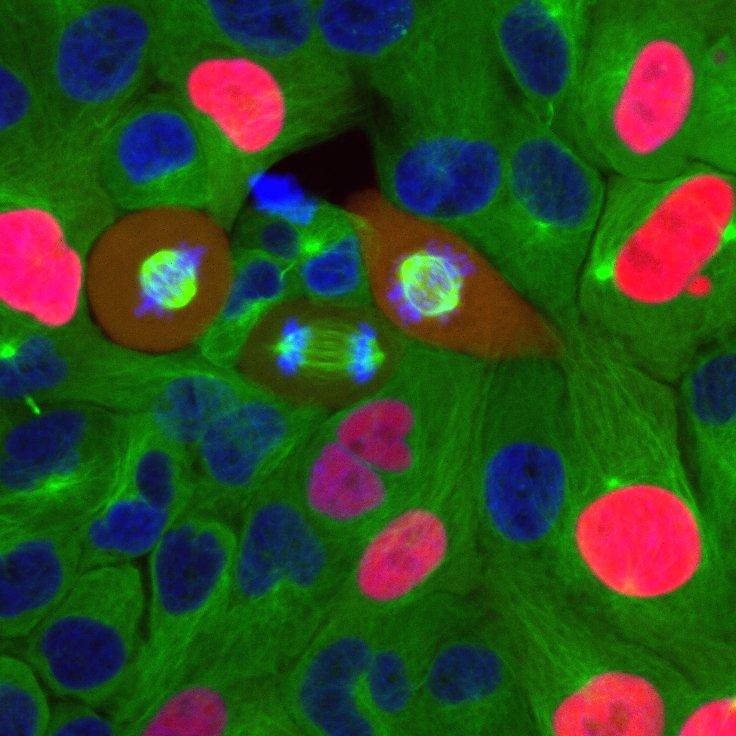NIH study offers insights into how cells reverse their decision to divide
- Posted:
240-760-6600

Breast cancer cells going through the cell cycle.
Credit: Credit: Cappell Lab
What
A new study suggests that cells preparing to divide can reverse this process and return to a resting state, challenging long-held beliefs about cell division. If interrupted early in their preparation to divide, cells were able to halt the division process, known as mitosis. The finding, led by researchers at the National Cancer Institute (NCI), part of the National Institutes of Health, and reported July 5, 2023, in Nature, could point toward more effective treatments to interrupt the process by which cancer cells divide quickly and spread.
When cells receive growth-promoting signals, called mitogens, they enter the cell cycle and synthesize new copies of their DNA in a series of steps that culminate in cell division. Scientists have long thought that the preparatory stage of this cycle includes a point after which cells cannot halt the process. Researchers believed that after this “point of no return,” growth signals are no longer needed to drive cells to divide.
In the new study, scientists at NCI’s Center for Cancer Research captured videos of thousands of cells undergoing mitosis and watched what happened to those cells when mitogens were withdrawn. About 15% of the cells exited the cell cycle and returned to a resting state. What those cells had in common was that they hadn’t been as far along as others in the cycle when they stopped receiving growth-promoting signals. In experiments with many different kinds of cells, researchers found that all types of cells were capable of exiting the cell cycle if interrupted early enough.
Drugs that inhibit the cell cycle regulators CDK4 and CDK6, such as the breast cancer drug palbociclib (Ibrance), likely interrupt cells’ progression through the cell cycle differently than previously thought, the researchers said. They are now looking at whether they can take advantage of this new molecular mechanism to design a more durable therapy by combining CDK4 and CDK6 inhibitors with traditional chemotherapy drugs that induce DNA damage.
Who
Steven D. Cappell, Ph.D., Center for Cancer Research, National Cancer Institute
The Study
“Loss of CDK4/6 activity in S/G2 phase leads to cell cycle reversal” appears July 5, 2023, in Nature.
About the National Cancer Institute (NCI): NCI leads the National Cancer Program and NIH’s efforts to dramatically reduce the prevalence of cancer and improve the lives of people with cancer. NCI supports a wide range of cancer research and training extramurally through grants and contracts. NCI’s intramural research program conducts innovative, transdisciplinary basic, translational, clinical, and epidemiological research on the causes of cancer, avenues for prevention, risk prediction, early detection, and treatment, including research at the NIH Clinical Center—the world’s largest research hospital. Learn more about the intramural research done in NCI’s Center for Cancer Research. For more information about cancer, please visit the NCI website at cancer.gov or call NCI’s contact center at 1-800-4-CANCER (1-800-422-6237).
About the National Institutes of Health (NIH): NIH, the nation's medical research agency, includes 27 Institutes and Centers and is a component of the U.S. Department of Health and Human Services. NIH is the primary federal agency conducting and supporting basic, clinical, and translational medical research, and is investigating the causes, treatments, and cures for both common and rare diseases. For more information about NIH and its programs, visit nih.gov.